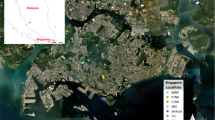Abstract.
Proteopsis argentea (Asteraceae, Vernonieae) is a perennial herb endemic to the “campos rupestres” of the Espinhaço Range in Minas Gerais, Brazil, with fragmented populational distribution. Eleven populations were sampled, throughout the entire distribution of the species, and assayed for isozyme variation. Low intra-population genetic diversity was found (P = 19.2; A = 1.30; He = 0.058) whereas species level diversity was higher (P = 55.5, A = 2.0, He = 0.093). The most geographically isolated population showed exclusive alleles at two loci, whereas two populations less than 2 km apart from each other showed inverted frequencies for two alleles. Mean genetic identity was high (I = 0.974), but the large Fst (0.30) indicates that the species could lose an important part of its genetic variation with the extinction of a single population. Our findings indicate that geographic isolation alone cannot explain population differentiation: localized pollinator behaviour and selection, for example, may be contributing to the patterns observed.
Similar content being viewed by others
Author information
Authors and Affiliations
Additional information
Received February 18, 2000 Accepted November 1, 2000
Rights and permissions
About this article
Cite this article
Jesus, F., Solferini, V., Semir, J. et al. Local genetic differentiation in Proteopsis argentea (Asteraceae), a perennial herb endemic in Brazil. Plant Syst. Evol. 226, 59–68 (2001). https://doi.org/10.1007/s006060170073
Issue Date:
DOI: https://doi.org/10.1007/s006060170073




